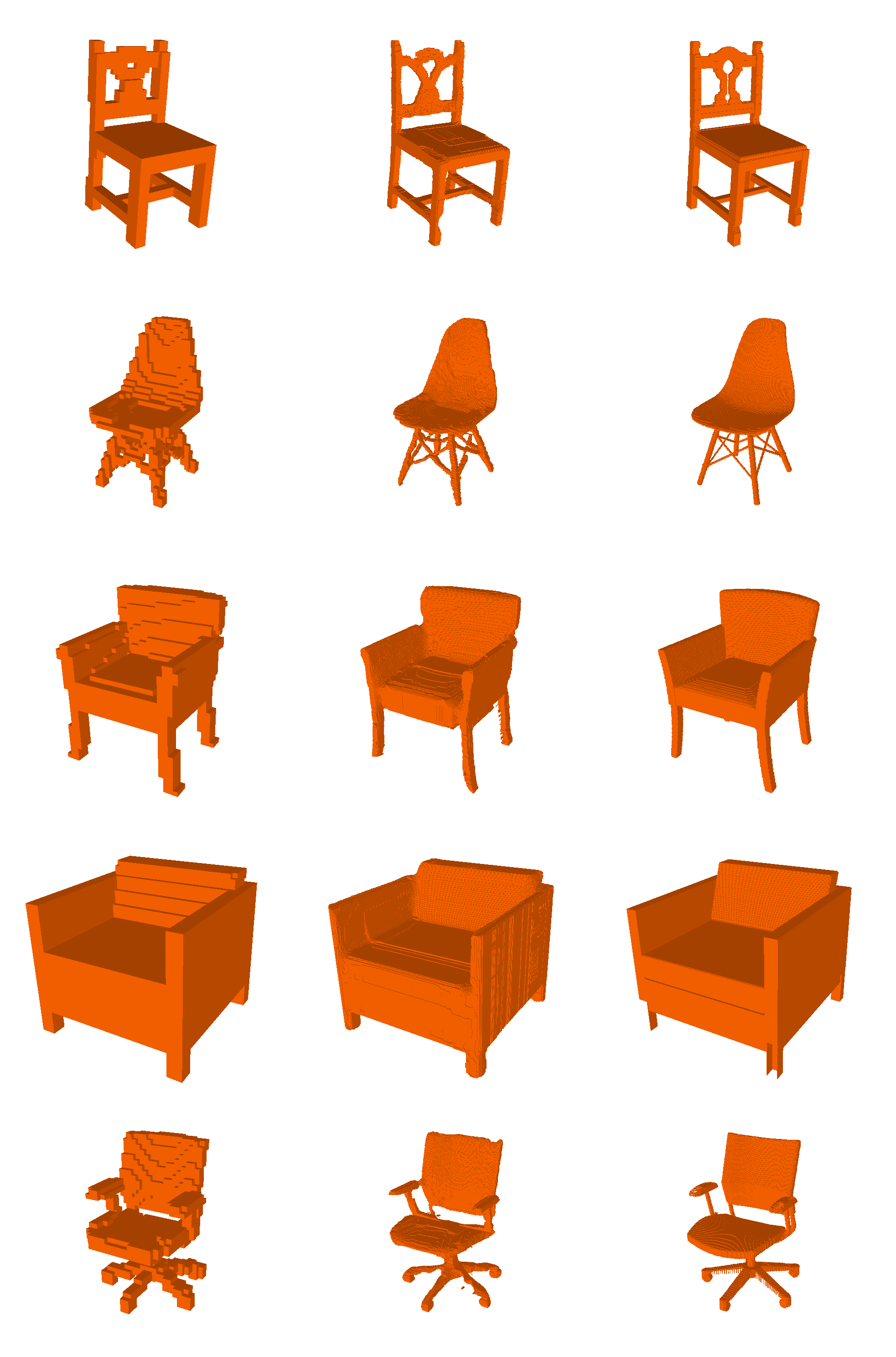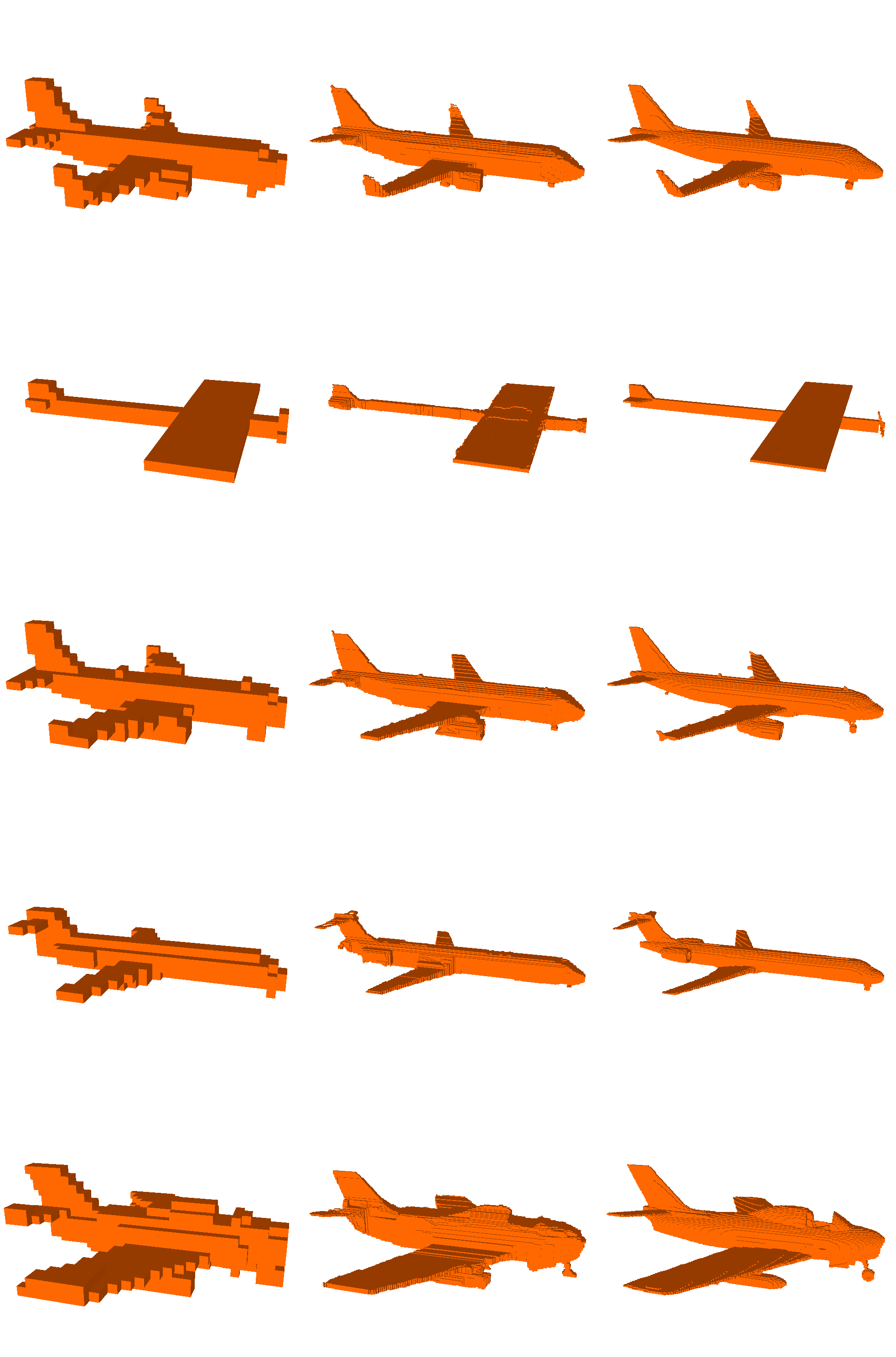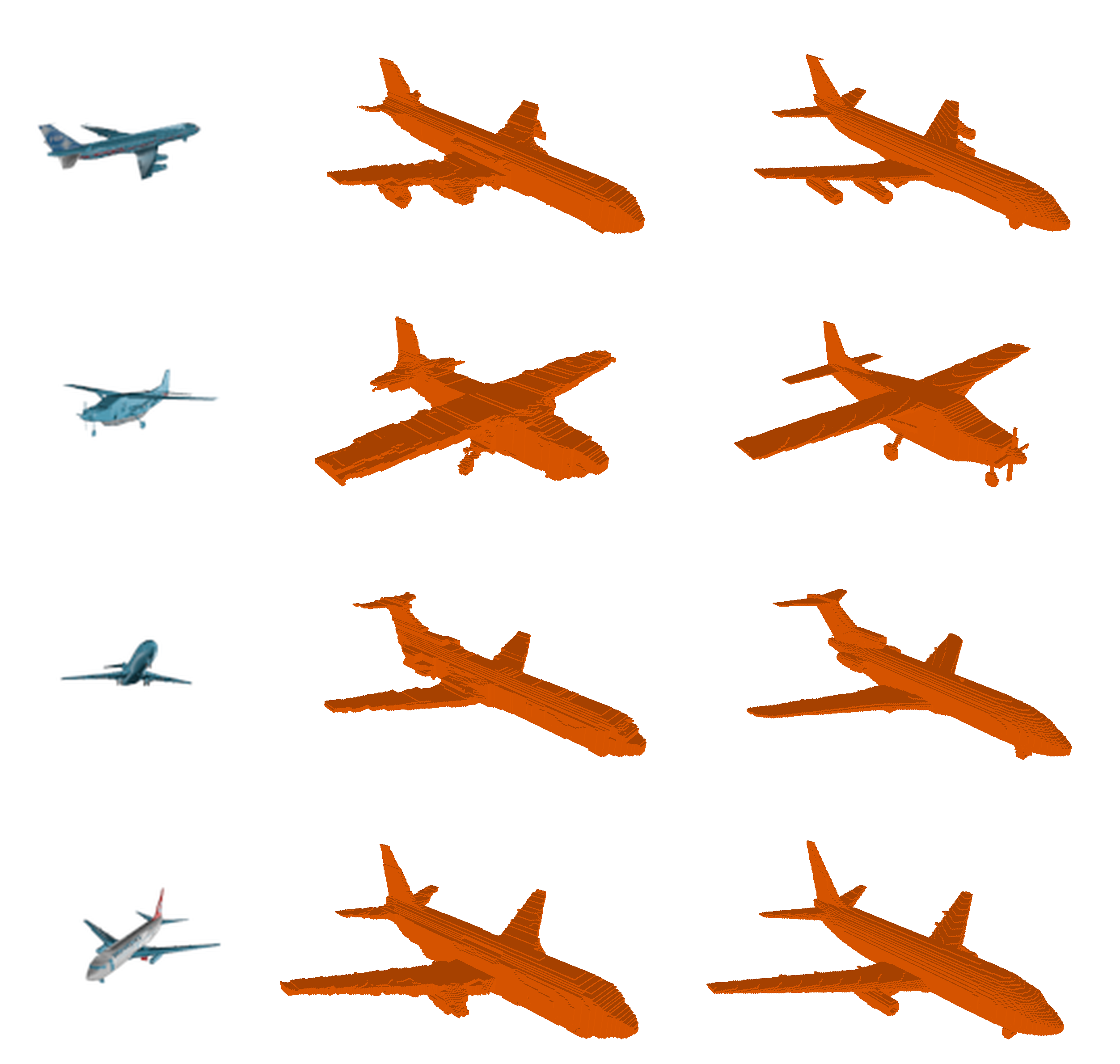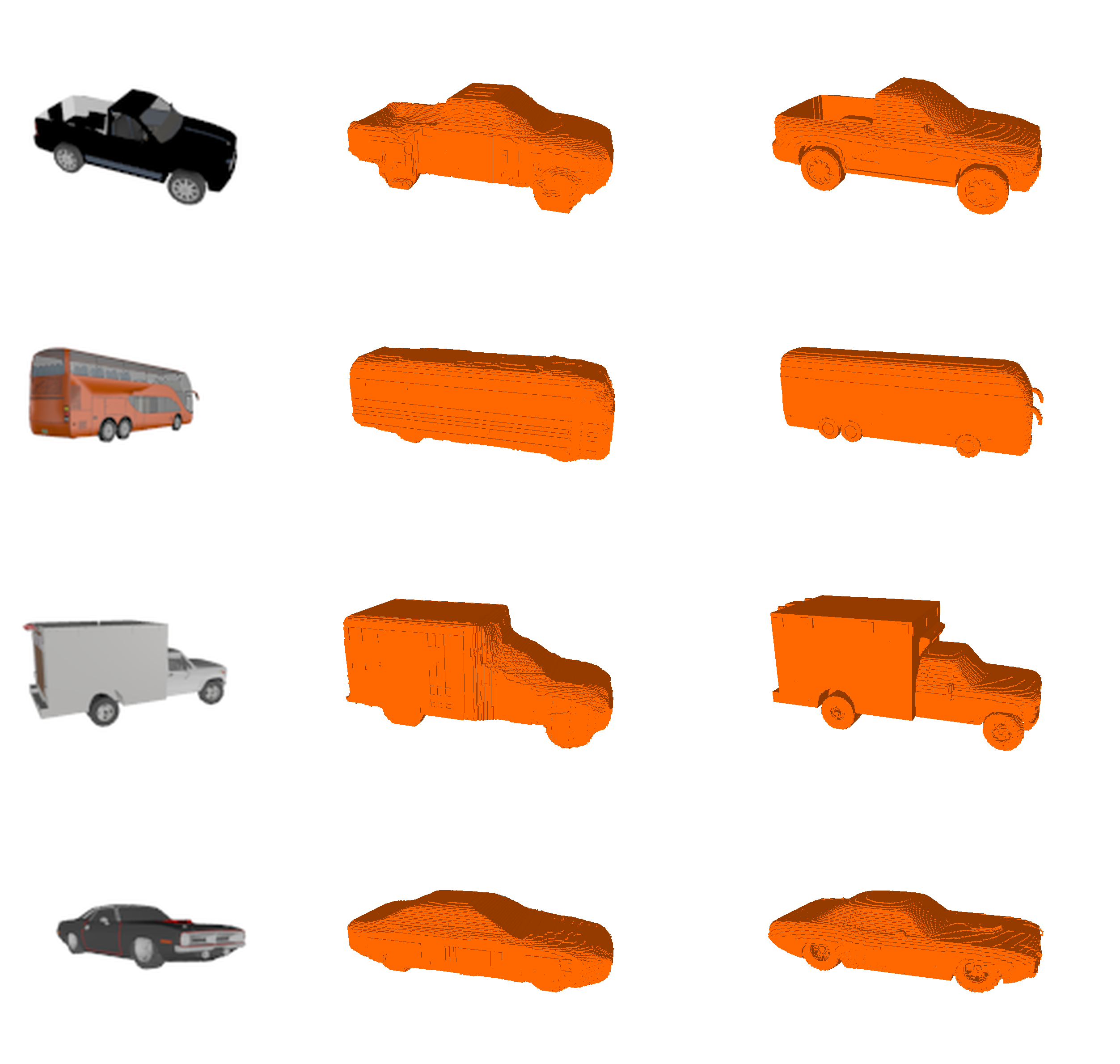This is a repository to reproduce the method from the paper "3D Object Super-Resolution". The code here allows one to train models to accurately and efficiently upsample voxelized objects to high resolutions, and to reconstruct voxelized objects from single RGB images at high resolutions.
Example super-resolution results, when increasing from 32^3 resolution to 256^3 resolution. The first row is the low resolution inputs and the second row is the corresponding high resolution predictions.
To produce the data needed to train and test the methods of this project we have the 'data_prep.py' script. This will download CAD models from the core classes of the ShapeNet data set, convert the objects to voxel objects, extract orthographic depth maps, render the objects as images, and split all the data into training, validation of test sets. This script makes use of the binvoxer executable, so first call
sudo chmod 777 binvox Blender is also needed for this project so please ensure it is installed before beginning.
sudo apt install blenderBy default this scripts downloads the full chair class, to upscale from 32^3 to 256^3 resolution, and renders 10 images for each object. To achieve this call:
python data_prep.pyAs an example to futher understand how to customize the data, to produced 1000 plane objects for 64 -> 128 resolution increase, and render 5 images per plane object call:
python data_prep.py -o plane -no 1000 -hi 128 -l 64 -ni 5 The first element of this repo is the 3D super-resolution method. For this method 6 primary orthographic depth maps(ODM) are extracted from the low resolution object, and passed through our image super resolution method to produce a prediction for the corresponding high resolution object's 6 primary OMDs. The predicted ODM's are then used to carve away at the low resolution object(upsampled to the higher resolution using nearest neighbor interpolation), to produce an estimate for the high resolution object.
 Intuitive Diagram to understand the 3D super-resolution method.
Intuitive Diagram to understand the 3D super-resolution method.
The image super-resolution technique used to predict high resolution odms, makes use to two deep convolutional neural networks. The first network, outlined in 'depth.py', estimates only the new depths into the known surface of the low resolution object within a predefined range. The output of this network is added the corresponding low resolution odms(upsampled to the higher resolution), to produce a complete estimate for the depths to the new object's surface. The second network, outlined in 'occupancy.py", predicts an occupancy map for the high resolution odm, basically predicting silhouettes for the predicted object. The outputs of these two networks are combined to produce a rough estimate of the high resolution ODM, and then smoothed to produce a final prediction.
 Intuitive Diagram to understand the 3D super-resolution method.
Intuitive Diagram to understand the 3D super-resolution method.
- To train the depth map prediction network call:
python depth.py- To train the occupancy map prediction call:
python occupancy.py- To evaluate the Super Resolution prediction call:
python SREval.pyThese all assume the default chair class is being increased from resolution 32 to resolution 256. To alter this call each script with the -h argument to view how to change each parameter. The two networks should not need more then 100 epochs to train fully, and graphs are created and saved in the '/plots/' directory should you wish to stop training early. The 'SREval.py' script will show predicted high resolution objects one at a time using meshlab. If you do not have meshlab installed call:
sudo apt-get install meshlabThis script is a little slow as converting large voxel arrays into a meshes for viewing takes some time. The actual method is quite fast.
Example objects super-resolution resolution results. High definition copies of these images can be found in the Images folder.The second element of this repo is applying our Super-Resolution method to reconstructing high resolution objects from single RGB images. For this application an ensemble of auto-encoders is used to produce low resolution reconstructions of objects from images, and then our super resolution method is applied to the resulting objects to produce high resolution reconstructions.
 The full pipeline for high resolution 3D object reconstruction from images.
The full pipeline for high resolution 3D object reconstruction from images.
Assuming the depth and occupancy predictors have already been trained simply call the following code to train an auto-encoder for the low resolution reconstruction:
python recon.py To understand how to change the parameters of the function, call with the -h argument. One can test with only a single auto-encoder, however, should you wish to achive as high accuracy as cited in our paper you should train an ensemble. To train further models, call:
python recon.py -ensemble Kwhere K is the current ensemble number, the default number is zero.
To test to perfomance of the trained models call:
python ReconEval.pyThis function will show the input image and render the produced high resolution object one at a time. Again, the largest overhead in this script is converting the voxel objects into meshes for visualization. To understand how to change the parameters of this script use the -h argument when calling. All parameters are set by default to using the chair class and increase the resolution from 32^3 to 256^3.
Example objects reconstructed from images. For each class, the left shows the input images, the center shows the predicted objects, and the right the ground truth. High definition copies of these images can be found in the Images folder.please cite my paper: https://arxiv.org/pdf/1802.09987.pdf ,if you use this repo for research




